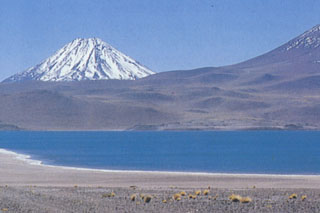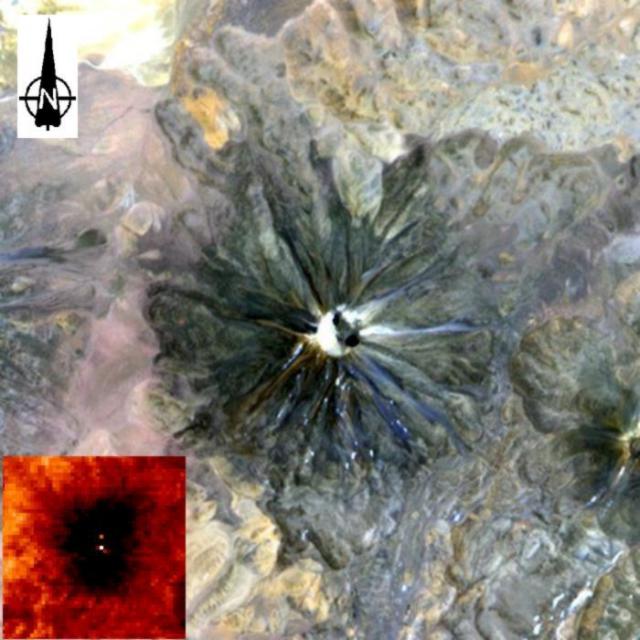Report on Chiliques (Chile) — June 2002
Bulletin of the Global Volcanism Network, vol. 27, no. 6 (June 2002)
Managing Editor: Richard Wunderman.
Chiliques (Chile) Signs of awakening despite recent dormancy
Please cite this report as:
Global Volcanism Program, 2002. Report on Chiliques (Chile) (Wunderman, R., ed.). Bulletin of the Global Volcanism Network, 27:6. Smithsonian Institution. https://doi.org/10.5479/si.GVP.BGVN200206-355098
Chiliques
Chile
23.58°S, 67.7°W; summit elev. 5778 m
All times are local (unless otherwise noted)
On 12 April 2002, NASA's Jet Propulsion Laboratory reported that new images taken by the Advanced Spaceborne Thermal Emission and Reflection Radiometer (Aster) on NASA's Terra satellite showed signs of activity at Chiliques. This volcano was previously considered to be dormant; however, on 6 January, a nighttime thermal infrared image from Aster showed a hot spot in the summit crater, as well as several others along the upper flanks, indicating new volcanic activity (figure 1). Examination of an earlier nighttime thermal infrared image from 24 May 2000 showed no such hot spots.
General Reference. de Silva, S.L., and Francis, P.W., 1991, Volcanoes of the Central Andes: Berlin: Springer-Verlag, 216 p.
Geological Summary. Volcán Chiliques is a structurally simple stratovolcano located immediately south of Laguna Lejía. The summit contains a 500-m-wide crater. Several youthful lava flows, some of which are considered to be of possible Holocene age (de Silva, 2007 pers. comm.), descend its flanks. The largest of these extends 5 km NW. Older lava flows reach up to 10 km from the summit on the N flank. This volcano had previously been considered to be dormant; however, in 2002 a NASA nighttime thermal infrared satellite image from the Advanced Spaceborne Thermal Emission and Reflection Radiometer (ASTER) showed low-level hot spots in the summit crater and upper flanks.
Information Contacts: Michael Abrams, Jet Propulsion Laboratory, California Institute of Technology, National Aeronautics and Space Administration, Pasadena, CA 91109 (URL: http://www.jpl.nasa.gov/).


